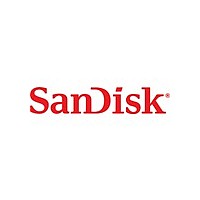SDMJ-32 SanDisk, SDMJ-32 Datasheet - Page 51

SDMJ-32
Manufacturer Part Number
SDMJ-32
Description
Manufacturer
SanDisk
Type
MultiMedia Cardr
Datasheet
1.SDMJ-32.pdf
(91 pages)
Specifications of SDMJ-32
Density
32MByte
Operating Supply Voltage (typ)
3.3V
Operating Temperature (min)
-25C
Operating Temperature (max)
85C
Package Type
MMC
Mounting
Socket
Pin Count
7
Operating Temperature Classification
Commercial
Operating Supply Voltage (min)
2.7V
Operating Supply Voltage (max)
3.6V
Programmable
Yes
Lead Free Status / RoHS Status
Compliant
Revision 1.3
© 2005 SanDisk Corporation
4.5.1
4.5.2
4.5
Error Conditions
CRC and Illegal Commands
Read, Write and Erase Time-out Conditions
The following sections provide valuable information on error conditions.
CRC bits protect all commands. If the addressed MultiMediaCard/RS-MultiMediaCard
CRC check fails, the card does not respond and the command is not executed. The card
does not change its state, and the COM_CRC_ERROR bit is set in the Status Register.
Similarly, if an illegal command has been received, an MMC/RS-MMC will not change its
state or respond, and will set the ILLEGAL_COMMAND error bit in the Status Register.
Only the non-erroneous state branches are shown in the state diagrams (Figure 4-1 and
Figure 4-2). Table 4-7 contains a complete state transition description.
Different types of illegal commands include:
The period after which a time-out condition for read/write/erase operations occurs is (card
independent) 10 times longer than the typical access/program times for the operations
given in Table 4-3. A card will complete the command within this time period, or give up
and return an error message. If the host does not get a response within the defined time-out
it should assume the card is not going to respond any more and try to recover (e.g., reset
the card, power cycle, reject). The typical access and program times are defined as shown
in Table 4-3.
Table 4-3
• Commands belonging to classes not supported by the MMC/RS-MMC (e.g., I/O
• Commands not allowed in the current state (e.g., CMD2 in Transfer State).
• Commands not defined (e.g., CMD6).
command CMD39).
Operation
Erase
Read
Write
Typical Access and Program Time
The read access time is defined as the sum of the two times given by the CSD
parameters TAAC and NSAC. These card parameters define the typical delay
between the end bit of the read command and the start bit of the data block.
The R2W_FACTOR field in the CSD is used to calculate the typical block
program time obtained by multiplying the read access time by this factor. It
applies to all write/erase commands (e.g., SET(CLEAR)_WRITE_PROTECT,
PROGRAM_CSD(CID) and the block write commands).
The duration of an erase command will be (order of magnitude) the number of
sectors to be erased multiplied by the block write delay.
4-13
MultiMediaCard/RS-MultiMediaCard Product Manual
Chapter 4 – MultiMediaCard Protocol Description
Definition
04/22/05












